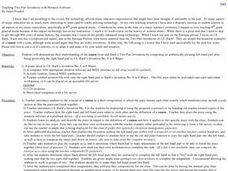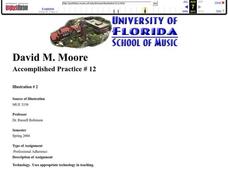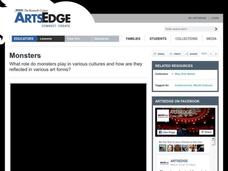Curated OER
Teaching Two-Part Inventions with Notation Software
Students demonstrate the canon form and Bach's Two-Part Inventions by composing an aesthetically pleasing left-hand part after being given only the right hand part to J.S. Bach's Invention No. 8 in F Major. Keyboard lab suggested.
Curated OER
Monsters
Do monsters really exist? Find out what your class thinks with these discussion questions prior to reading Beowulf. Incorporate music and a video clip into the anticipatory set to engage your learners. Take a day to search online...
Curated OER
Three Arts in Retrograde
Young scholars make connections between music, the other arts, and other curricular areas. They compare characteristics of two or more arts within a particular historical period or style and cite examples from various cultures.
Curated OER
Music and Technology
Third graders practice reading rhythm patterns with different types of notes and meters. Using a counting system, they perform a sight reading exercise and take notes when needed. They use a form of technology to illustrate the music.
Curated OER
Changes of Musical Elements in Popular Music Through the Decades
Students probe samples of European classical, American jazz, and rock and roll to analyze the similarities and differences. The styles and form of these three types of music are examined for tempo, timbre, and rhythm.
Curated OER
Monsters
Students explore the idea of 'monsters' in society. In this character lesson, students define what a monster is, what purpose they serve and why they are necessary. They will go on the read Beowulf and Grendel and design their own...
Curated OER
Music Appreciation:
Students list the four main families of musical instruments, name one instrument from each musical family, name three ways music is used in everyday life.






